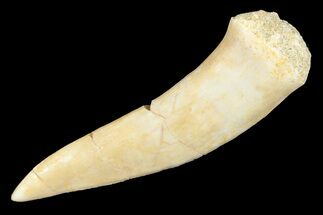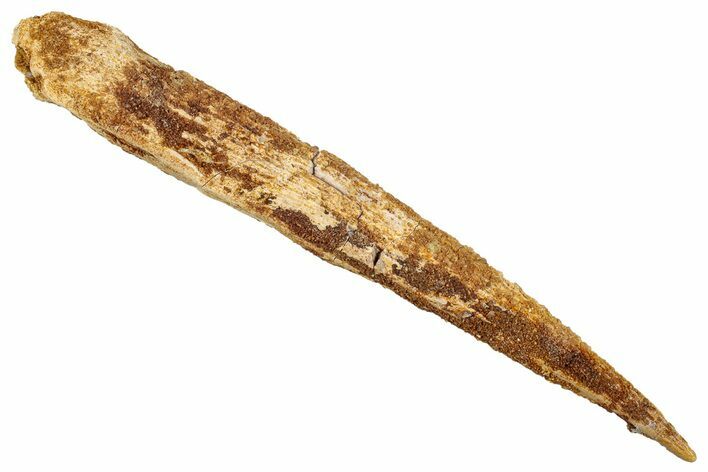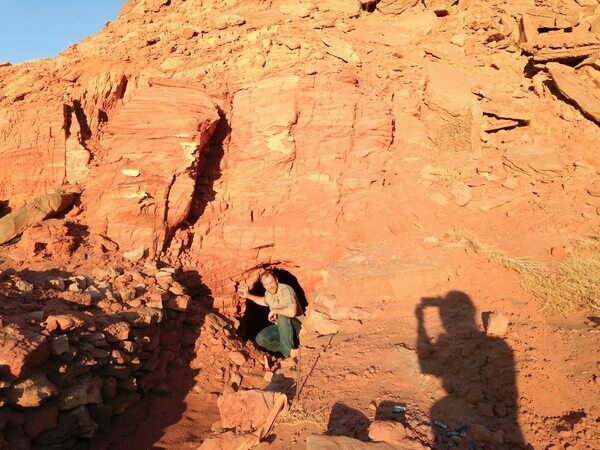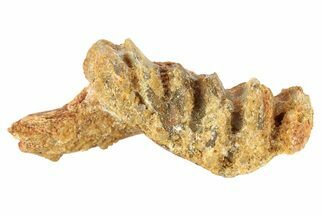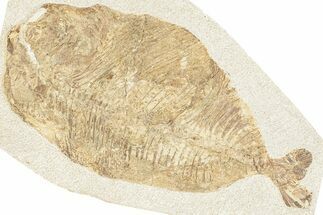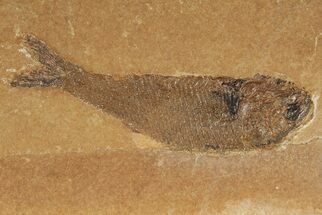This Specimen has been sold.
5.6" Fossil Shark (Asteracanthus) Dorsal Spine - Kem Kem Beds
This is a 5.6" long fossil dorsal spine of a shark (Asteracanthus ornatissimus). It comes from the Late Cretaceous-aged Kem Kem Beds near Taouz, Morocco. There are two hybodontiform sharks whose spines are found in this formation with Asteracanthus being the rarer of the two.
It has glue stabilized cracks along its length as these spines are fairly delicate and typically are found fractured.
It has glue stabilized cracks along its length as these spines are fairly delicate and typically are found fractured.
Asteracanthus ornatissimus is an extinct species of hybodontiform, a cartilaginous fish closely related to modern sharks and rays. It lived from the Middle Jurassic to the Early Cretaceous (about 165 to 100 million years ago) in the seas of what is now west-central Europe. Like other hybodonts, Asteracanthus possessed distinct sets of teeth and fin spines, which are often the only preserved parts of these animals. A rare complete A. ornatissimus specimen was quarried from the Solfhonen Limestone of Bavaria, Germany in 2021, giving vital insight into this species' morphology.
A. ornatissimus's teeth were specialized for grasping and crushing all kinds of small shelled and soft-bodied prey, which it likely scavenged for while browsing seafloors of the open ocean. Its extinction may have been caused by eventual supplanting by modern sharks.
Hybodonts were a group of shark-like cartilaginous fish that existed from the Devonian all the way to the Cretaeous-Paleogene extinction event. They are characterized by distinct fin spines and mouths of flattish teeth specialized for crushing, tearing, and grinding. Fossil evidence indicates they were adapted to all kinds of freshwater, estuarine, and marine environments. Modern sharks eventually overtook their ecological niches in marine environments.
A. ornatissimus's teeth were specialized for grasping and crushing all kinds of small shelled and soft-bodied prey, which it likely scavenged for while browsing seafloors of the open ocean. Its extinction may have been caused by eventual supplanting by modern sharks.
Hybodonts were a group of shark-like cartilaginous fish that existed from the Devonian all the way to the Cretaeous-Paleogene extinction event. They are characterized by distinct fin spines and mouths of flattish teeth specialized for crushing, tearing, and grinding. Fossil evidence indicates they were adapted to all kinds of freshwater, estuarine, and marine environments. Modern sharks eventually overtook their ecological niches in marine environments.
The Kem Kem Group
The Kem Kem Group, also known as the Kem Kem Beds, is a significant geological formation located in southeastern Morocco, specifically in the region of the Anti-Atlas Mountains. This formation dates back to the late Cretaceous period, approximately 95 million years ago. The Kem Kem Beds are primarily composed of sandstone, siltstone, and claystone, interspersed with various sedimentary features that indicate a fluvial to deltaic environment.
The Kem Kem Group is renowned for its rich fossil deposits, which include a diverse array of prehistoric fauna. It has yielded a wide variety of dinosaur fossils, including theropods like Spinosaurus and Carcharodontosaurus, as well as large Sauropod dinosaurs such as Rebbachisaurus. Additionally, the beds are home to many other fossilized creatures, including crocodiles, pterosaurs, fish, and a range of invertebrates.
Paleontologists consider the Kem Kem Group an important site for studying late Cretaceous ecosystems and the evolution of vertebrate life. The fossils found in this region have provided valuable insights into the diversity and behavior of prehistoric species, making it a key location for both scientific research and fossil collecting. The striking landscapes of the Kem Kem Beds, with their colorful rock formations and dramatic geological features, also attract geologists and tourists interested in the natural history of the area.
A paper on this assemblage can be found at: Vertebrate assemblages from the early Late Cretaceous of southeastern Morocco: An overview
The Kem Kem Group, also known as the Kem Kem Beds, is a significant geological formation located in southeastern Morocco, specifically in the region of the Anti-Atlas Mountains. This formation dates back to the late Cretaceous period, approximately 95 million years ago. The Kem Kem Beds are primarily composed of sandstone, siltstone, and claystone, interspersed with various sedimentary features that indicate a fluvial to deltaic environment.
The Kem Kem Group is renowned for its rich fossil deposits, which include a diverse array of prehistoric fauna. It has yielded a wide variety of dinosaur fossils, including theropods like Spinosaurus and Carcharodontosaurus, as well as large Sauropod dinosaurs such as Rebbachisaurus. Additionally, the beds are home to many other fossilized creatures, including crocodiles, pterosaurs, fish, and a range of invertebrates.
Paleontologists consider the Kem Kem Group an important site for studying late Cretaceous ecosystems and the evolution of vertebrate life. The fossils found in this region have provided valuable insights into the diversity and behavior of prehistoric species, making it a key location for both scientific research and fossil collecting. The striking landscapes of the Kem Kem Beds, with their colorful rock formations and dramatic geological features, also attract geologists and tourists interested in the natural history of the area.
A paper on this assemblage can be found at: Vertebrate assemblages from the early Late Cretaceous of southeastern Morocco: An overview
SPECIES
Asteracanthus ornatissimus
LOCATION
Taouz, Kem Kem Basin, Morocco
FORMATION
Kem Kem Beds
SIZE
5.6" long
CATEGORY
ITEM
#277667
We guarantee the authenticity of all of our specimens.
 Reviews
Reviews



